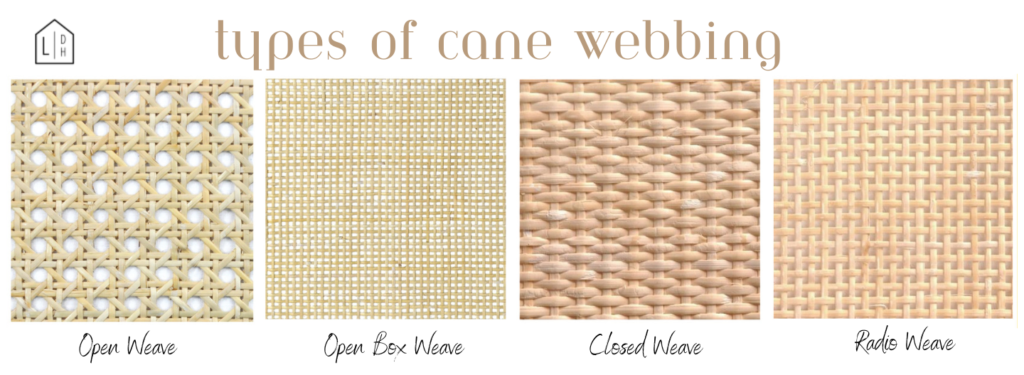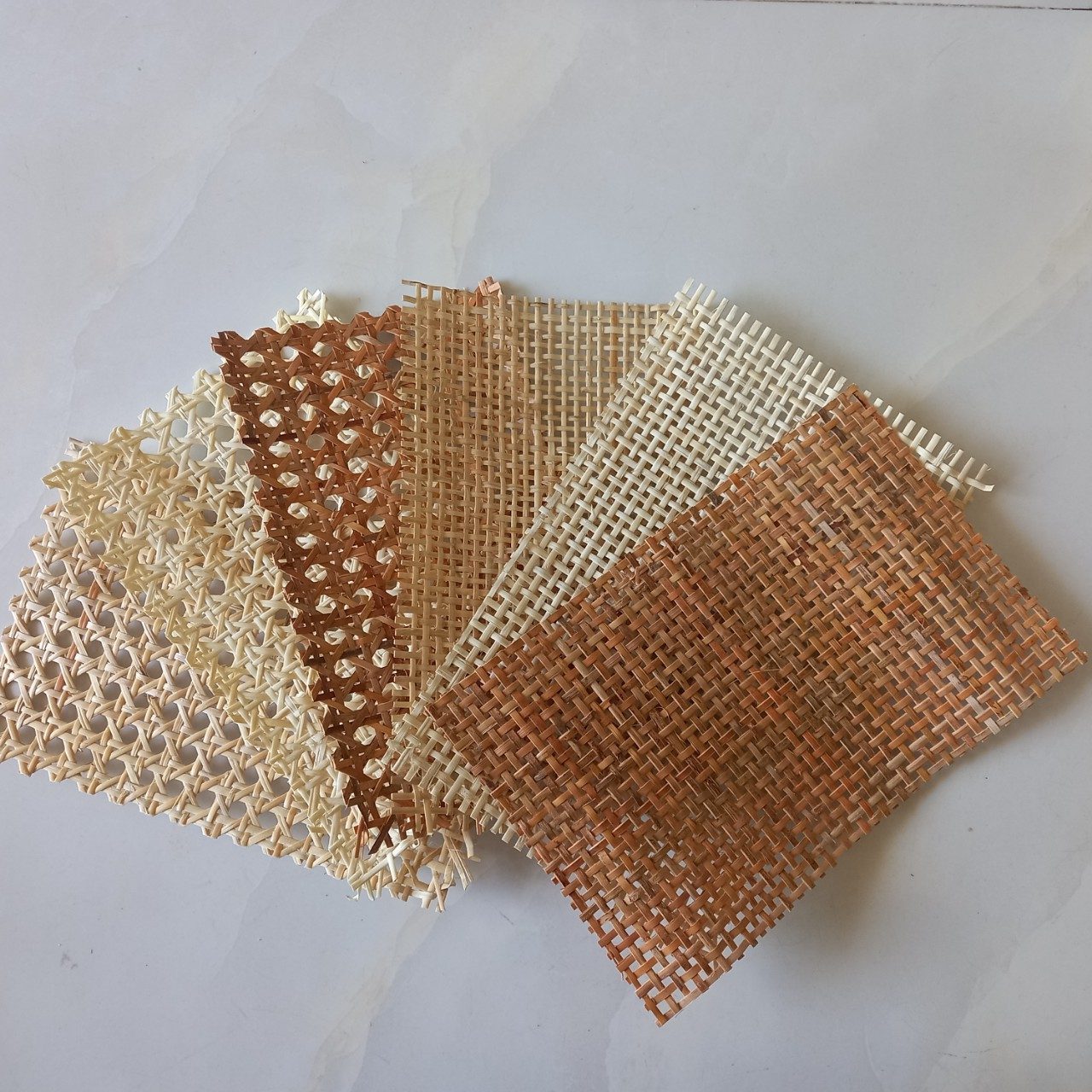Today I’m working on an ADU kitchen design for a client in Sebastopol. The client asked about cane front cabinets and I thought this would be the perfect time to talk about cane material!
What is Cane?
Cane is a natural material that comes from the rattan plant. Rattan is a type of climbing palm typical to Southeast Asia. When the rattan plant is processed, it is split into two parts: the core reed (rattan) and the thinner interior (cane). Cane is very flexible and strong and can be woven into intricate patterns and is frequently used as the material for the backs of chairs. This woven material is called “cane webbing”.

The two most popular types of cane webbing are open weave and radio weave. Open weave looks very geometric and patterned – while radio weave is more simple – just a one over, one under pattern, like most fabrics. Both are extremely strong and water resistant, making it suitable for chair backs and seats, cabinets, headboards, room dividers, etc.
History
Cane webbing has a long history, with its origins dating back to ancient Egypt. However, it gained significant popularity during the 19th and 20th centuries. It was during the Victorian and Edwardian eras that cane webbing started to appear in various furniture pieces, such as chairs, chaises, and headboards. This trend continued into the early 20th century, particularly during the Art Nouveau and Arts and Crafts movements, where natural materials and craftsmanship were highly valued in design.
In the mid-20th century, cane webbing experienced another surge in popularity, particularly during the mid-century modern movement. Designers like Marcel Breuer and Hans Wegner incorporated cane webbing into their iconic furniture designs, making it a staple of that era’s aesthetic. The clean lines and organic textures of cane webbing complemented the overall ethos of mid-century modern design.
Modern Resurgence
In recent years, there has been a resurgence of interest in cane webbing as interior designers and homeowners seek to incorporate more natural and sustainable materials into their spaces. The popularity of bohemian, coastal, and Scandinavian design aesthetics has contributed to the renewed interest in cane webbing. Designers and craftsmen are exploring innovative ways to incorporate this traditional material into modern designs, ranging from traditional patterns to more contemporary and creative interpretations.
It’s truly a versatile interior design material and has experienced many cycles of popularity throughout history. Its enduring appeal lies in its ability to add texture, warmth, and a sense of connection to nature within interior spaces. Whether used in furniture, cabinetry, or decorative accents, cane webbing continues to captivate designers and homeowners alike with its timeless charm.
Is Cane Trendy?
In my opinion, no. I see it as a classic material. After all – it’s been used for hundreds of years! Is it currently trending? Yes. But there’s a huge difference between “trendy” and “trending”.
